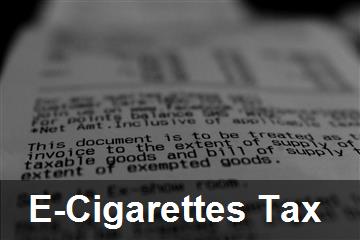
18 set 2024
The recent legislative reform introduces a new consumption tax on e-cigarettes, alongside stricter sanctions.
This tax applies to non-combustible inhalation products, excluding those authorized as medicinal products.
The tax rate is set at 40% of the cigarette excise duty, with the exact amount determined annually by the Customs and Monopolies Agency (Adm). The tax must be paid by manufacturers, intra-EU suppliers, or importers, who are also required to manage authorized warehouses and provide financial guarantees.
The sale to end consumers is restricted to authorized retailers.
The recent legislative reform has introduced a new consumption tax on e-cigarettes, along with stricter sanctions.
This tax targets non-combustible inhalation products made from solid substances other than tobacco, whether they contain nicotine or not.
However, products authorized as medicinal under Dlgs 219/2006 are exempt.
The tax rate is set at 40% of the excise duty on cigarettes, as per article 39 terdecies of the Tua.
The exact tax amount is determined annually by the Customs and Monopolies Agency (Adm), which also adjusts the tax based on the weighted average price of cigarettes by March 1 each year.
The tax liability falls on different entities depending on the product's origin.
For domestically produced items, the manufacturer is responsible.
For intra-EU supplies, the supplier must pay the tax directly if based in Italy, or through a fiscal representative if not.
Importers handle the tax for products from non-EU countries.
Manufacturers and intra-EU suppliers must obtain prior authorization from Adm to establish and manage a warehouse.
These warehouses store both domestic and intra-EU products, and operators must provide a financial guarantee equal to 10% of the average tax due on the products stored over the previous twelve months.
Similarly, fiscal representatives of intra-EU suppliers must meet specific requirements and provide a guarantee based on the average tax due over the past year.
Importers also need prior authorization from Adm to introduce products from third countries.
Tax assessment and payment for manufacturers and intra-EU suppliers are based on monthly declarations, with payments due the following month.
For imports, tax assessment, liquidation, and collection occur at customs, following border duty procedures.
Sales to end consumers cannot be conducted remotely and must occur through authorized retailers, with products bearing a specific mark.
Critical Aspects and Potential Issues:
- The financial burden on small manufacturers and suppliers.
- Potential market shifts due to increased product costs.
- Enforcement challenges for remote sales restrictions.
Common Pitfalls and Errors:
- Misunderstanding the tax application scope.
- Inadequate financial guarantees.
- Non-compliance with warehouse management regulations.
Suggestions and Useful Tips:
- Ensure thorough understanding of the new tax regulations.
- Maintain accurate records for tax declarations.
- Seek professional advice for compliance and financial guarantee requirements.

